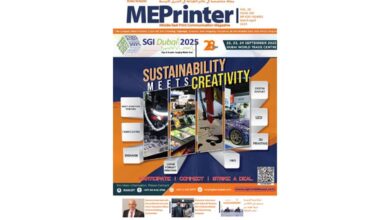Fashion Designers Launch 3D Printed Paper Jewellery
ME Printer has been keenly tracking the progress of 3D printing not just in the GCC but across the globe. Be it fashion, construction or healthcare industry, 3D printing is making waves just about everywhere. So, how about adorning a 3D printed jewellery?
Well, 3D printed jewellery were already experimented right during the initial days of 3D printing in the 80’s. But Vanina, a fashion label engaged in designing and selling of jewellery, accessories and apparels have broken all norms and created 3D printed paper jewellery.
Childhood friends Tatiana Fayad and Joanne Hayek who started this designer label first shared limelight when they launched ‘coined’, a jewellery line that explored the concept of up-cycling by transforming old devalued Lebanese Lira into unique pieces of jewellery in May 2007. Since then, there was no looking back. Vanina has evolved over the years from being just a single jewellery line to a lifestyle fashion brand presenting numerous collections of handmade pieces, known for their unique aesthetic and materiality, blending the vintage and modern styles with a strong sense of fun.
When the duo decided to experiment with 3D printed paper jewellery, they chose Mcor’s 3D printer. These printers are the only 3D printers to use ordinary business-A4/letter paper as the build material, a choice that renders durable, stable and tactile models.
Joanne Hayek said, “Mcor is a great tool for us as a fashion brand. It allows us to expand our exploration of new methods of reuse by using digital fabrication techniques in tandem with traditional handcrafting.”
“The starting point for the design was the idea of using paper as a raw material, which could be transformed into a new object, and thus carry on a second life,” explained Hayek. “Taking it a step further, we chose to work with used papers, in line with our environmental policy that focuses on raising awareness about waste management issues and maximising reuse in our collections.”
“The high resolution of the Mcor 3D printer is suitable for our detailed needs and enables us to build shapes that are self supporting, allowing for spans without requiring temporary supports, as is the case with resin and plastic-based 3D printers,” explained Hayek. “We adopted an iterative design process, which allowed us to optimize and calibrate the pieces based on the specifications of the 3D printer.
Various rounds of prototypes were made to ensure we were working in line with the minimum thicknesses of the machine in order to resolve details such as piercing through the pieces to allow for chains and earring bars, edges of the leaves, and more.”

.gif)



